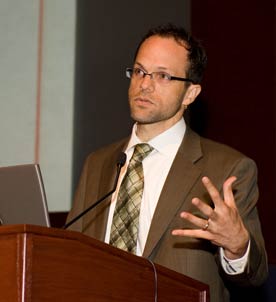Over the past few months we’ve gotten a clear indication of how the Obama administration approaches community development. They have articulated a comprehensive placed-based strategy embedded in a regional framework — a way of working that says no single action by itself can change a community. Revitalization requires that decent jobs, schools, and homes must be available. Crime needs to be under control and it has to be possible to go from one place to anther affordably and efficiently.
OK, that’s not news. And the Obama administration isn’t the first to promote a comprehensive strategy for community revitalization. So what’s different now? For one thing, all of the key officials that can put substance behind rhetoric actually have first-hand experience in community development, some have even battled the very bureaucracies they now lead.
And the administration has put its money where its mouth is. Take a look at the second Neighborhood Stabilization Program in this year’s American Recovery and Reinvestment Act and compare it with the first NSP in the Housing and Economic Recovery Act of 2008. Both programs have their flaws, but NSP 2 requires and rewards a comprehensive and collaborative approach. It’s an approach that permeates every part of the administration and may become the standard operating procedure for federal agencies: a cross-silo, collaborative, evidence-based approach to developing, implementing and funding programs. Just take a look at the August 11 memo sent jointly by the heads of the Office of Management and Budget, the Domestic Policy Council, the Office of Urban Affairs, and the National Economic Council entitled “Developing Effective Placed-Based Policies for the FY 2011 Budget.”
Now the difficult part comes. How do we replace a system built on categorical funding and narrowly defined programs and outcomes? And how to you provide both the framework to do this and the funding to support overburdened nonprofits and communities?
The Livable Communities Act (S. 1619), making its way through Congress now, is one very important step. If passed, it will provide incentive and funding to support this agenda, including the establishment of the Interagency Council on Sustainable Communities. Another vital step, is having people like Xavier de Souza Briggs, known and respected by many in the community development field, in a position to refine and guide the agenda forward. Briggs is the Associate Director for General Government Programs at OMB. He describes some of the thinking behind, implementation of, and challenges to this new agenda in an exclusive Shelterforce interview.
The CDC Challenge
Briggs is a powerful advocate for community development, but he also lays out a few challenges to the field, challenges that CDCs must meet to remain relevant, strong and successful. Some of those challenges are examined by Joe Kriesberg, the executive director of the Massachusetts Association of CDCs, in his article, “A 21st Century Vision for Community Development.” His article begins a series of features that will examine the roles of CDCs, the strengths and weaknesses of the model and the changing conditions that CDCs find themselves in. We’ll also, in the coming year, look at the tension between the kind of placed-based work practiced by CDCs and the metropolitan strategies supported and encouraged by the administration.
NSP 1, NSP 2, ARRA, HERA, TARPÉ
Throughout this issue we look at how communities use stimulus dollars to create equitable and sustainable change. Is the stimulus, along with the 2010 budget funding, allowing for the implementation of real neighborhood preservation strategies? Are communities forming enduring collaborations, or are they collaborating to satisfy grant requirements? To set the stage, we’ve asked 11 leaders in the community development world to weigh in on the stimulus, how it plays out in our communities, and how it needs to improve.
We round out the issue with Barry Zigas’ in-depth look at Fannie Mae and Freddie Mac; the effects of the foreclosure crisis on minority households by Daniel McCue of the Joint Center for Housing Studies and how to construct a more rational housing mortgage policy by Reid Cramer of the New America Foundation.
Coming Up
In December we will publish a double issue that, for those of you keeping track, will put us back on schedule. Our lead feature will be in an interview with Shaun Donovan, HUD Secretary. We’ll follow up on the themes of this issue and start some new ones.




Comments